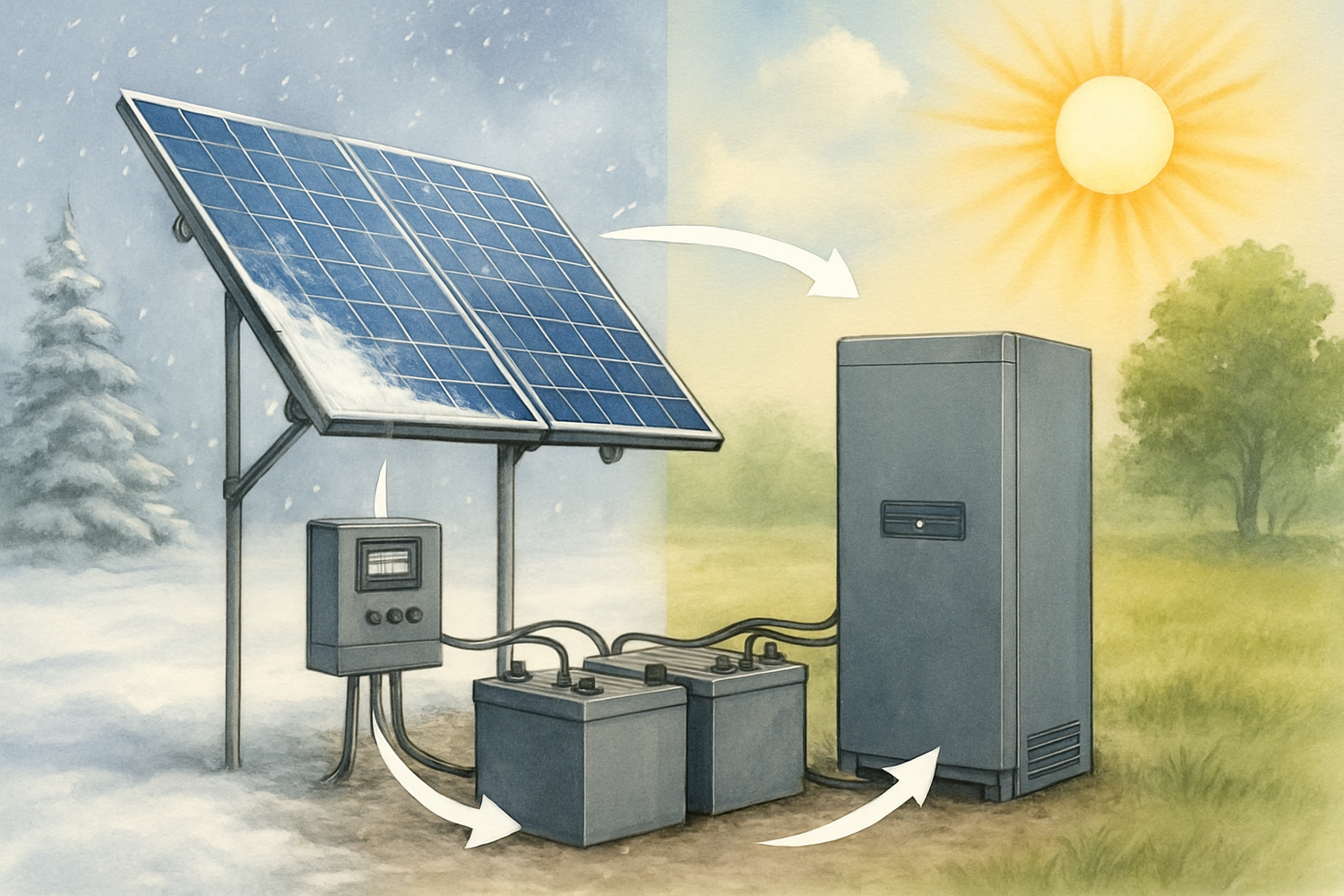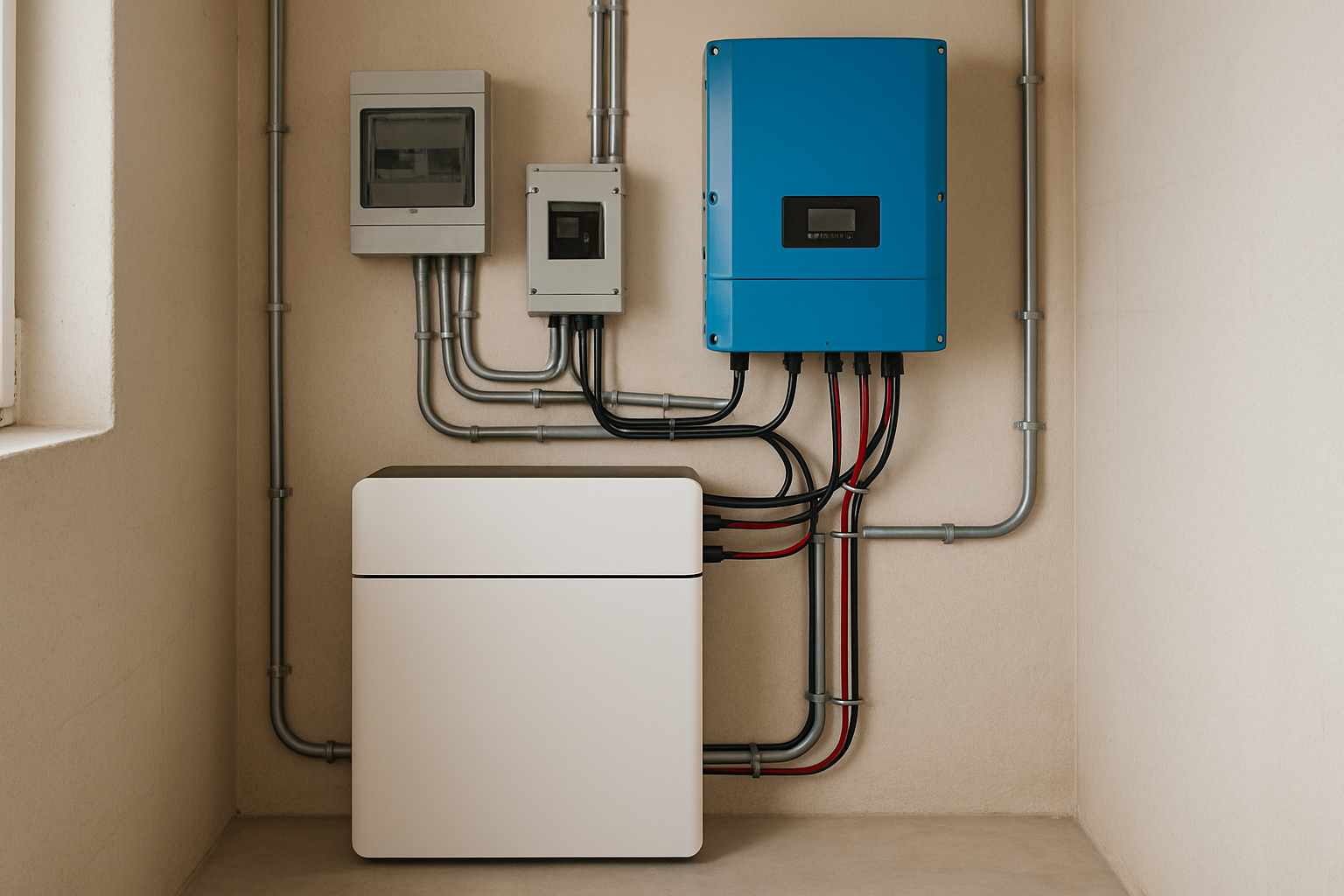Achieving reliable energy independence with an off-grid solar system requires more than just initial setup. Seasonal changes significantly impact your system's performance and the lifespan of your batteries. Proactive adjustments to your inverter and Battery Management System (BMS) are crucial for maintaining efficiency and ensuring long-term reliability. This roadmap guides you through optimizing your system for every season.

Understanding Your Off-Grid System in Changing Seasons
Your off-grid system operates within a dynamic environment. External factors, particularly temperature and solar availability, directly influence how effectively your inverter converts power and how your batteries store it.
Impact of Temperature on Battery Performance
Temperature is a critical factor for battery health. Extreme heat can accelerate battery degradation, while extreme cold can significantly reduce effective capacity and charging efficiency. For LiFePO4 batteries, maintaining an optimal operating temperature range is vital for their promised high performance and safety. Operating outside these ranges can stress the battery cells, leading to diminished capacity over time.
Seasonal Solar Irradiance Fluctuations
The amount of sunlight your solar panels receive varies dramatically throughout the year. Winter often brings shorter days and lower sun angles, resulting in reduced solar irradiance. Conversely, summer offers longer daylight hours and more intense sunlight. These fluctuations directly affect how much energy your system can generate and, consequently, how often and deeply your batteries are charged and discharged. Adapting your system settings helps accommodate these natural variations.
Optimizing Inverter Settings for Seasonal Performance
The inverter is the brain of your off-grid system, converting the direct current (DC) from your solar panels and batteries into usable alternating current (AC) for your home. Adjusting its settings seasonally ensures efficient power conversion and protects your battery bank.
Charge and Discharge Parameters
You can fine-tune your inverter's charge parameters, such as bulk, absorption, and float voltages, to match seasonal temperature variations. For instance, some battery chemistries require slightly different charging voltages in colder temperatures to ensure a full charge without overstressing the cells. During periods of low solar irradiance, such as winter, you may consider adjusting discharge limits. Setting a higher minimum State of Charge (SOC) can prevent excessively deep discharges, which are detrimental to battery longevity, especially when recharge opportunities are scarce.
Modern inverters, particularly grid-forming models, offer advanced capabilities. According to Grid Codes for Renewable Powered Systems, grid-forming inverter technologies, often linked to battery systems, enable the power system to completely switch off any form of conventional, synchronous generation and provide all necessary services to the power system. This capability is proven technology at the mini-grid level, with a decade-long track record of reliable operations, even in remote and demanding conditions. This highlights their importance in maintaining system stability and reliability, especially in dynamic off-grid environments.
Load Management and Prioritization
Seasonal changes often necessitate adjustments to how you manage your energy consumption. During low-sun periods, you might need to prioritize critical loads and shed non-essential ones. Many inverters offer programmable auxiliary outputs that you can configure to automatically disconnect certain loads when battery voltage drops below a specified threshold. This proactive load management prevents complete battery depletion and system shutdowns, ensuring power for your most important appliances.
BMS Adjustments for Enhanced Battery Health
The Battery Management System (BMS) is the guardian of your battery bank. Its role is to monitor and protect individual battery cells, ensuring safe and optimal operation. Seasonal adjustments to your BMS settings are critical for maximizing battery lifespan.
Temperature Compensation for Charging
Many advanced BMS units offer temperature compensation features. This means the BMS can automatically adjust charging parameters based on the ambient temperature detected by its sensors. In cold weather, the BMS might reduce the charging current to prevent lithium plating, a damaging phenomenon that can occur when LiFePO4 batteries are charged too aggressively at low temperatures. In hot weather, it can prevent overcharging by slightly lowering charge voltages, mitigating the risk of thermal runaway and extending battery life.
Cell Balancing and Monitoring
Consistent cell balancing is always important, but it becomes even more critical with temperature fluctuations. Temperature gradients within a battery bank can lead to individual cells drifting out of balance. The BMS actively works to equalize the voltage across all cells, preventing any single cell from being overcharged or undercharged. Regularly monitoring individual cell voltages through your BMS interface provides valuable insights into your battery's health and helps identify potential issues early. The Electricity Storage Valuation Framework underscores the value of understanding and maintaining battery system performance for long-term benefits.
Practical Maintenance Schedule and Best Practices
A structured maintenance approach ensures your off-grid system remains robust and responsive to seasonal changes.
Quarterly System Review
- Visual Inspection: Check all connections for corrosion or looseness. Ensure ventilation openings on your inverter and battery enclosures are clear.
- Firmware Updates: Verify if your inverter and BMS have available firmware updates. Manufacturers often release updates that improve performance, add features, or address known issues.
- Performance Logging: Review your system's data logs. Look for consistent charging and discharging patterns, stable voltages, and any error codes. Documenting this data helps you identify trends and diagnose problems early.
Annual Deep Dive
- Professional Inspection: Consider an annual inspection by a qualified solar technician. They can perform advanced diagnostics and ensure all components are operating within specifications.
- Capacity Testing: For older battery banks, a professional capacity test can determine the actual usable capacity remaining, helping you plan for future upgrades.
- Data Analysis: Conduct a comprehensive review of your historical performance data. Analyze how your system performed across different seasons, noting any anomalies or areas for improvement. This data-driven approach allows for more informed seasonal adjustments in the future.
Achieving Year-Round Energy Resilience
Implementing a seasonal maintenance roadmap for your inverter and BMS is not merely a task; it is an investment in the longevity and reliability of your off-grid solar system. By proactively adjusting settings to account for temperature changes and solar irradiance variations, you optimize performance, extend battery lifespan, and secure your energy independence throughout the year. This diligent approach ensures your system consistently delivers the power you need, regardless of the season.
Frequently Asked Questions
Why are seasonal adjustments important for off-grid systems?
Seasonal adjustments optimize your system's performance and prolong battery lifespan by accounting for variations in temperature and solar availability. This proactive approach prevents stress on components and maintains efficiency.
How does cold weather affect my LiFePO4 battery?
Cold weather can reduce the effective capacity and charging efficiency of LiFePO4 batteries. The BMS should adjust charging parameters, often by reducing the charge rate, to prevent damage like lithium plating.
Can I automate seasonal settings?
Many modern inverters and BMS units offer programmable settings or temperature compensation features that can automate some adjustments. You can configure these based on ambient temperature sensors or time-based schedules. Consult your system's manual for specific capabilities.
What is a grid-forming inverter?
Grid-forming inverters can create and maintain the grid voltage and frequency, allowing a system to operate independently or support the grid. They are crucial for stable off-grid operations and can even enable a power system to operate without conventional synchronous generation, providing essential grid services.
How often should I check my inverter and BMS settings?
A quarterly review of your system's performance and basic settings is recommended, with a more thorough annual inspection. However, significant weather changes or noticeable system performance issues warrant immediate checks and potential adjustments.





Leave a comment
All comments are moderated before being published.
This site is protected by hCaptcha and the hCaptcha Privacy Policy and Terms of Service apply.